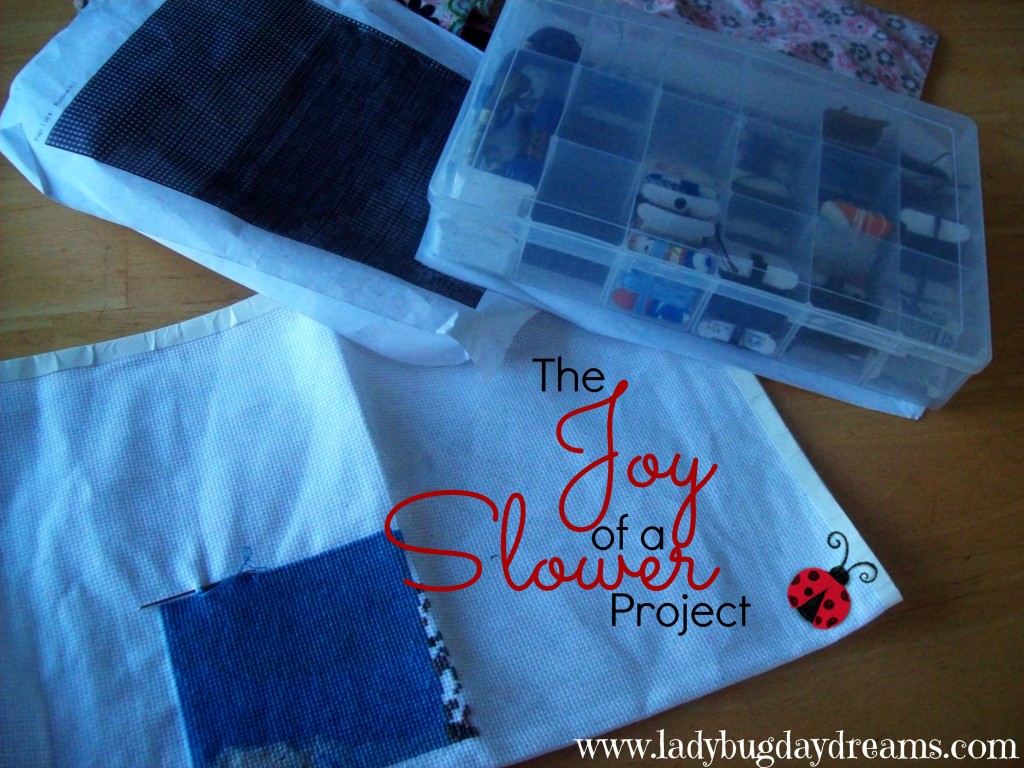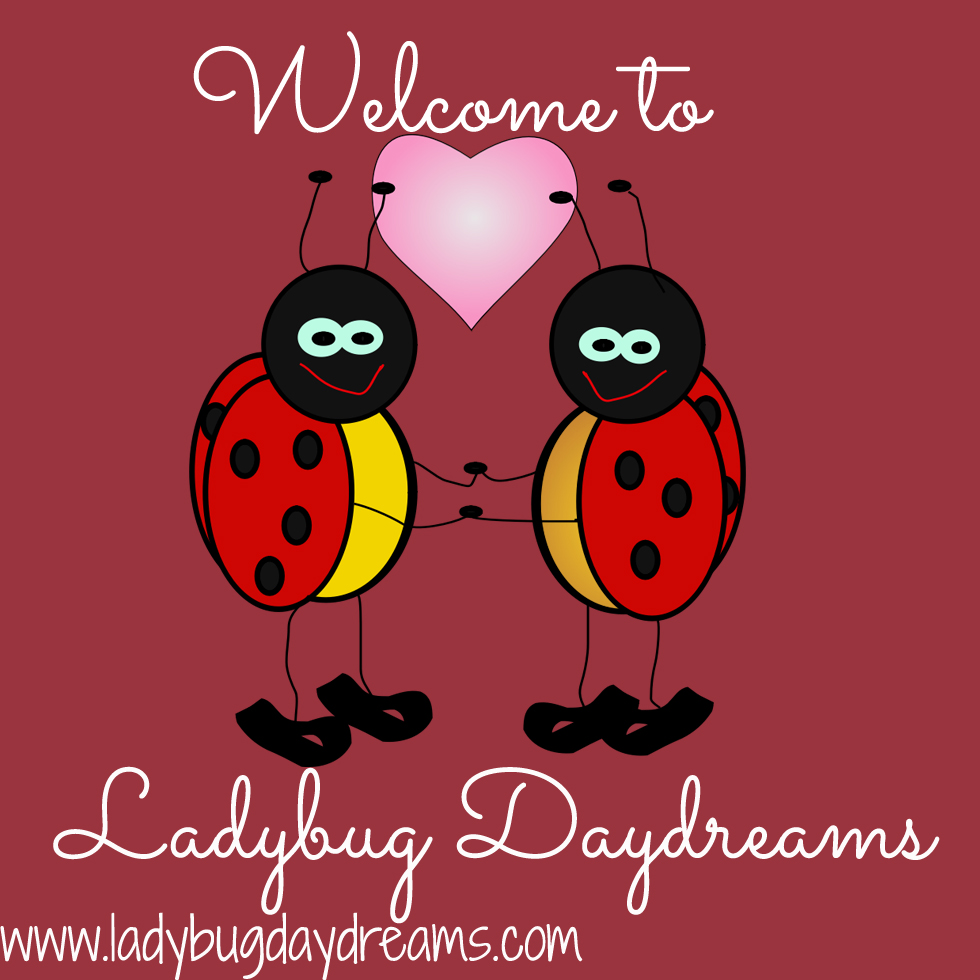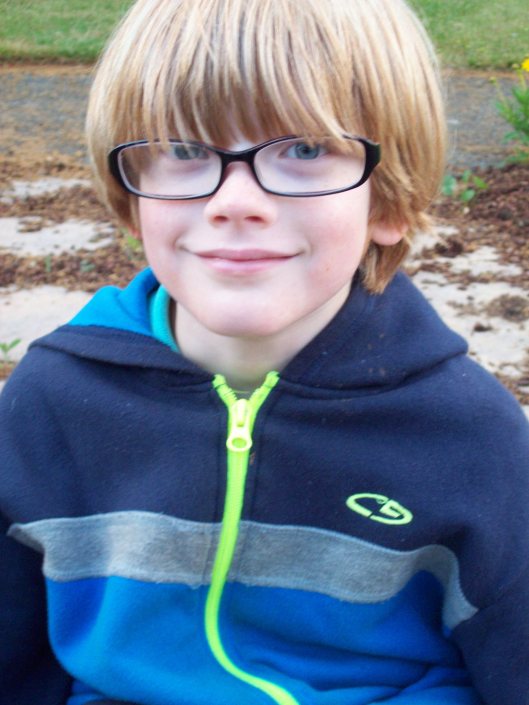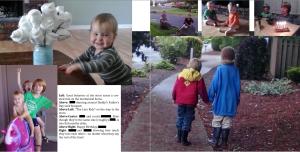We had the opportunity recently to do something really cool, and I wanted to share about it here. It was called Messiah’s Mansion, and it is a life-size reproduction of the Mosaic tabernacle from the book of Exodus. One of the churches in our town brought it in, and it was on display for a full week. There was no admission fee for the hour-and-a-half long guided tour, and it was one of the neatest things we’ve seen or done in a long time.
The first place we went on our tour was a kind of “holding area” that had a 3D model of what we were going to see as well as some poster-size pictures of a few of the temples through the years (Solomon’s temple, for example). Our tour guide spoke to us about all the different temples during this period, and then we moved on to the temple courtyard.
You shall make the court of the tabernacle.
Exodus 27:9
The courtyard was pretty neat. We walked through a curtain – which was made of the colors described in Exodus (blue, purple, red, and white). The pillars, while not real gold, silver, and bronze, were the size of the real ones from Moses’ day, based on the current knowledge of a cubit being 18 inches, and were placed at the correct intervals. In the middle of the courtyard stood the altar for making sacrifices and the bronze washbasin. I was surprised at how big these two items were! Thinking about it later, it made perfect sense that they’d be huge – after all, the Israelites had to sacrifice huge animals on them – but seeing it in person was still surprising. Our guide told us that the washbasin was the one item in the display that they can’t know for sure is real size because the Bible doesn’t mention the measurements for it.

Notice how big the altar is compared to my kids
In addition to making sure everything was the right size, they also were careful to put everything in the correct location, spatially. For example, we entered on the north side. The altar was on the north side of the courtyard, and the washbasin was just a little bit to the south of it, between the altar and the Holy Place.
As part of the presentation in the courtyard, we were supposed to see a “real” sacrifice (done with a toy lamb and a red cloth representing blood), but our tour guide got caught up in his speech and we ran out of time before we were “pushed” along by the group after us.
Moreover, you shall make the tabernacle with ten curtains of fine twined linen and blue and purple and scarlet yarns . . .
Exodus 26:1
We moved from the courtyard to the Holy Place – the tabernacle itself. This time, I was surprised in the opposite way as I was at the alter – this was much, much smaller than I imagined. If I had to guess, I’d say the Holy Place was not that much bigger than your average American living room. No kidding. In this room, there was the golden lampstand, the table for the “plates and dishes for incense” and “flagons and bowls for drink offerings” (Exodus 25:29), and the table for bread. The lampstand was a giant menorah, and the table for bread was a large table that held 12 loaves of unleavened bread, in two stacks of 6. (The loaves in the model were not real bread.) For the purposes of the demonstration, the loaves were bigger than real loaves (so people in the back row could see also).
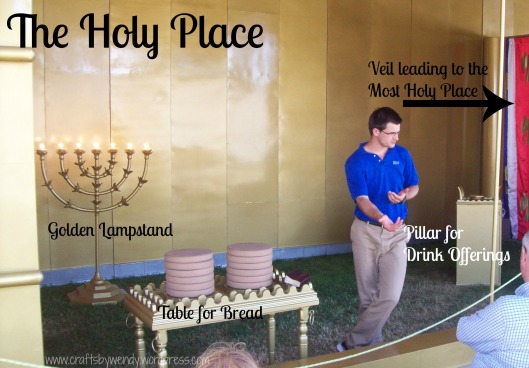

Between these three items, the room felt pretty full. There was room for people to be in there during worship, but not very many of them. Seeing this makes you understand why they had so many services during the day/week.
And the veil shall separate for you the Holy Place from the Most Holy. Exodus 26:33
From the Tabernacle, we moved to the Most Holy Place. I’m not going to lie: even though it was a replica, it still felt kind of weird to view this. I’m not, after all, the high priest of Israel. At the same time, it was interesting to see. The Most Holy Place is attached to the Holy Place, separated by just a curtain. Our tour guide passed “through” the curtain, much like a priest in Moses’ day would have. The rest of us went around. (The way this is set up reminded me of a shadow box. There were chairs for spectators to sit in at each area, and the guide was in the actual display, showing us things.) The Holy Place was the home of the Ark of the Covenant. Inside the Ark (which means “box” – Noah’s Ark was more box-shaped than boat-shaped, believe it or not) are three things: Aaron’s staff, which blossomed with almonds and flowers in Numbers 17; a golden jar of manna, which God had of course provided as food for the Israelites during their journey away from Egypt; and the stone tablets of the Ten Commandments. There were replicas of each of these items in the Ark at Messiah’s Mansion. 

After leaving the Most Holy Place, we went to the final “holding area,” where there was an additional model of the Ark of the Covenant as well as a mannequin dressed in the traditional Priests’ garments of the day. This is where our tour guide wrapped up the tour.


Overall, this was a very positive experience. I would definitely recommend that you find out if/when Messiah’s Mansion will be in a location near you and go experience it for yourself!
Blessings,
Wendy
This post was not sponsored in any way. We found out about Messiah’s Mansion through a flyer at the grocery store and went without any push from the Messiah’s Mansion people. They are not paying me to do this post. They don’t even know that I wrote it!
Like this:
Like Loading...

